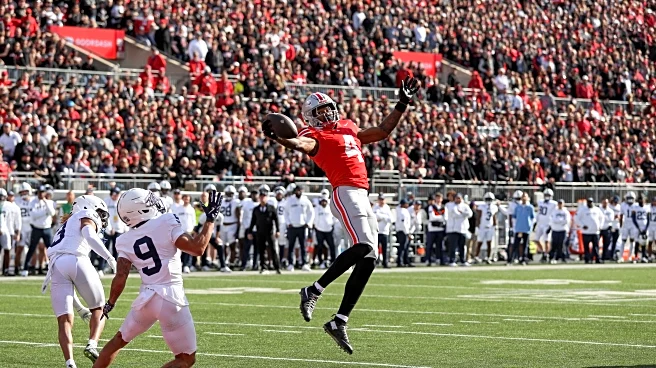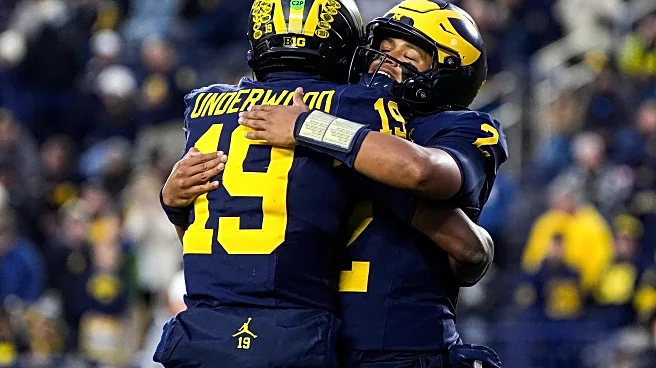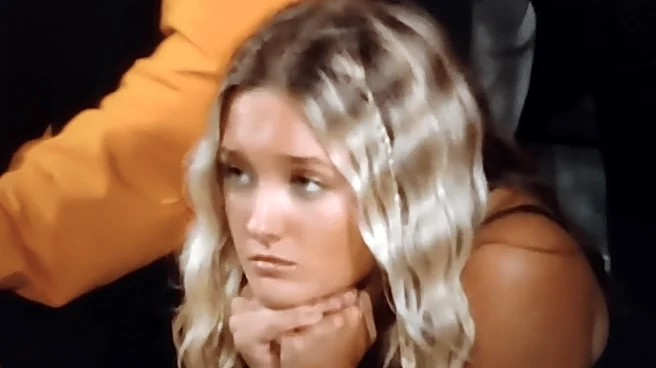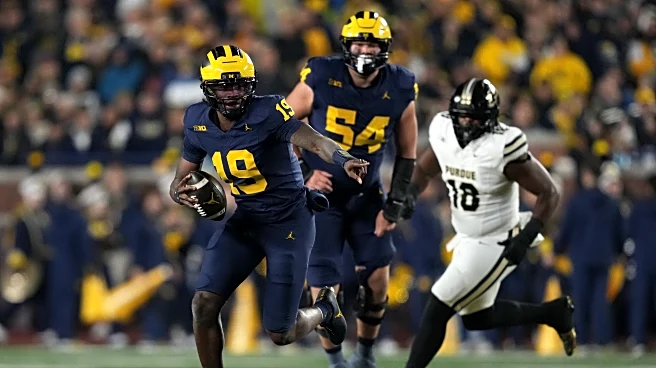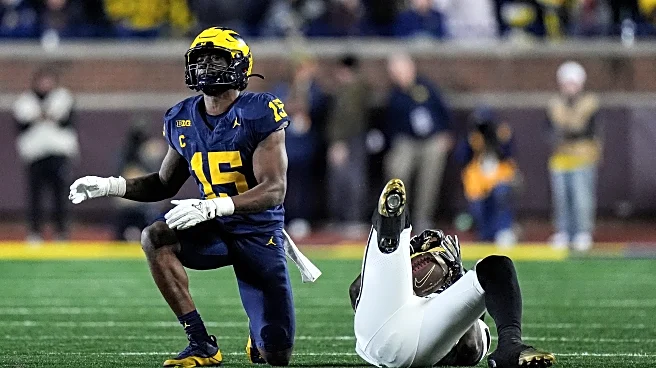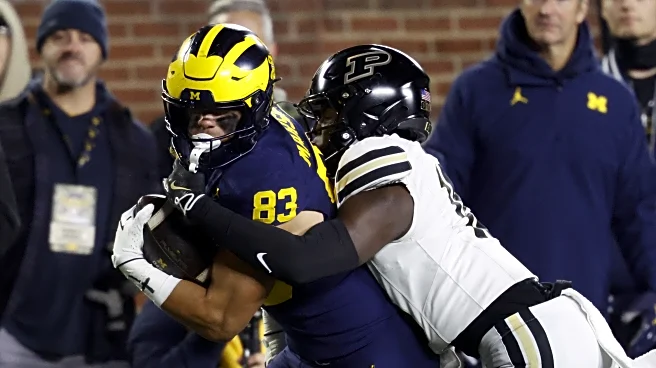Man, that was ugly. Like the bar is closing down, options are dwindling, let’s never talk about it again — UGLY.
Michigan is no stranger to ugly conference games. In 2021, the Wolverines needed late turnovers
to beat Rutgers, 20-13, and Nebraska, 32-29. Two teams that, combined that season, still finished with less wins than the Wolverines. Or in 2022 and 2023, when Michigan only escaped Maryland by one possession despite being a 17- and 19-point favorite, respectively. These games happen, but Saturday was almost the worst-case scenario.
For starters, the team was emotionally hungover from the rivalry win at Michigan State. The focus, effort and motivation were lacking for an inexplicable night game against a two-win opponent before the bye week. Hell, it wouldn’t surprise me if these college kids were more focused on Halloween after-party plans than the game plan.
Additionally, the Wolverines were banged up across the board. Running back Justice Haynes, and linebackers Jimmy Rolder and Cole Sullivan were both ruled out before the game, and Michigan lost edge Jaishawn Barham and wide receiver Donaven McCulley during the game.
But most detrimental to the team’s performance was the curse of youth. Young teams are inconsistent. Young teams have trouble with success. Young teams make mistakes. And I cannot remember a Michigan team younger — especially on offense — than this team. On the trick play completion to tight end Zack Marshall, the Wolverines had eight (!) true or redshirt freshmen — Bryce Underwood, Jordan Marshall, Andrew Sprague, Jake Guarnera, Blake Frazier, Andrew Marsh, Jamar Browder and Channing Goodwin — on the field. The first name being the most significant.
Equal parts exceptional and frustrating, the super-talent Underwood has played like most highly touted 18-year-olds in college football. However, nine games into his tenure in Ann Arbor, why is he still struggling? Or even seemingly regressing? Growing pains are expected, but Saturday was the worst he has looked inside the friendly confines of the Big House. What happened?
Like most teenagers, Underwood has trust issues. While chemistry issues persist with a litany of unreliable pass catchers — mainly those whose name is James spelled backwards — Underwood does not trust Michigan’s protection. Every team in the country now has tape on him, and we are beginning to see a pattern of blitzing from his left and forcing him to run or throw into zone or mixed coverage.
Most will want to know if this is Underwood’s or center Greg Crippen’s fault. Who is to blame for our sweet prince struggling? The answer will be lost in coach- and player-speak, and it frankly doesn’t matter. The quarterback and the protection just have to be aligned. If they are right together, this offense will hum. If not, post-snap improvisation will at least be more fluent. There has to be alignment, and that starts with trust.
Let’s dive into the tape and find some examples.
12-Personnel Double Slant + X-Fade
On the first third down of the game, Underwood faced immediate pressure and scrambled to keep the chains moving. A smart play that kept the drive alive. However, this already began to plant the seeds of doubt about his pass protection. Three plays later, Underwood was under duress again on the decisive down, scrambled, and missed a relatively easy completion to tight end Zack Marshall. Knowing Underwood is beginning to feel uncomfortable, Purdue begins to dial up the pressure more and more.
Facing a 3rd-and-6 on Michigan’s next possession, the Boilermakers send a clever blitz. Purdue brings six with the inside tackles twisting, the defensive ends taking three steps before crashing inside, and the linebackers wrapping around to blitz from the perimeter. In the secondary, they are playing man-to-man, with the free safety serving as a robber/spy in the vacated hook/curl area.
Michigan comes out with three pass catchers to the bottom of the formation (tight end Deakon Tonielli, wide receiver Andrew Marsh, and Marshall) and wide receiver Donaven McCulley isolated to the top. A staple Chip Lindsey third-down call, this play is designed to go to one of the two slant routes from the trio at the bottom. Marshall is going to go first on the slant, quickly followed by Marsh, who is the primary target, while Tonielli runs a slow-developing dig route. McCulley is going to run a fade route to the top and if he gets a 1-on-1 that Underwood likes, he is the alert.
At the snap, Underwood drops back, and you can see the panic when he hits his third step. He sees the blitzing linebackers and begins drifting backwards. A common inexperienced quarterback sin. In this moment, he either needs to hit his back foot and make a decision, or step up into the pocket to gain another second, maintain his base, and strike. But by drifting backwards (he receives the snap at the 27-yard line and throws it with his back foot on the 20), he lobs a fadeaway that is just beyond the reach of McCulley. If Underwood has his feet right, he delivers this accurately. If he steps up and lobs a 50/50 ball, McCulley likely either comes down with it or draws a pass interference.

In Underwood’s defense, you would like to see the left side of the offensive line communicate and pick up this blitz a little better. The end either needs to be passed off by left tackle Blake Frazier, or left guard Giovanni El-Hadi has to step up and knock the linebacker off his trajectory. On the frontside, running back Jordan Marshall correctly works inside-out on his pass protection, but is late recovering and only gets a piece of the blitzer.
However, Underwood is also going to have to stand in the pocket and take a hit from time to time. In this instance, avoidance is okay. But when points are on the line, that’s a different story.
13-Personnel TE Wheel + X-Post
Another staple play, Lindsey loves to call the tight end wheel route in the high red zone. We broke down two examples of this earlier this season with Underwood connecting with two different targets. Against New Mexico, he found tight end Marlin Klein for a touchdown right before the halftime. Against Central Michigan, he made the right read and connected with wide receiver Channing Goodwin on the post, again, right before the half.
With a little more than two minutes before halftime, Lindsey dialed it up once more, but with a twist. In the two previous examples, Michigan ran this concept from 11-personnel. This time, Michigan came out with 13-personnel. Tight ends Max Bredeson and Jalen Hoffman are stacked to the top of the formation, and Klein and McCulley are to the bottom. The personnel switch was due to Michigan’s newfound success utilizing three tight ends against Michigan State, and Lindsey knew teams would be keying on the wheel route from 11-personnel at this point in the season. After having Kirk Campbell as an offensive coordinator, let’s never take this level of competence for granted.
Purdue shows pressure with six defenders across the line of scrimmage. At the snap, the nearside edge will take Klein in coverage and the backside edge will be the fifth rusher. In the secondary, Purdue will play Cover 1 with two linebackers playing zone in the middle of the field.
Michigan has the perfect play call.
Pre-snap, Underwood should have either communicated to Bredeson or Hoffman (who both relish the physicality of contact) to chip the edge defender if he comes, or moved running back Jasper Parker to his blindside to chip the defender. Parker doesn’t even have to fully block him; if all he does is mildly inconvenience the blitzer or force him to take a longer path, this is a touchdown. Instead, no adjustments are made, and if that’s the case, Underwood has to be prepared to stand and deliver.
At the snap, McCulley’s post route takes two defenders and Klein is isolated with a defensive end, who bites harder than Marv Albert on the Out route. The moment Underwood hits his third step, this ball needs to be released. The deep safety is gone, so there is no danger of an interception. The ball will either be Klein’s or fall incomplete in the end zone. With enough touch, Klein will have time to locate it in the air and make a play.

Instead, Underwood hits his third step, shuffles when he feels the pressure, tries to rush his feet to reset, and throws a flaccid pass that falls incomplete at the feet of Klein. I cannot understand why Parker, at the least, was not flipped to the blind side here. He is not even check-releasing front-side — he is standing in to block. This play should have been six, and Underwood knows it.
On the very next play, like a freshman does, he tries to get it all back.
12-Personnel Mesh Double Snag
Completing the worst two-play sequence of the young quarterback’s career is a third-down disaster worthy of last year’s Michigan offense. The Wolverines come out with three pass catchers to the top of the formation (McCulley Marsh, Marshall) and Klein split to the bottom.
McCulley is going to clear out with a Go route, and Marsh is going to run an Out route at the first down marker. Both are simply designed to create space for the tight ends. Underneath, both tight ends are going to run Snag routes in the middle of the field, with Klein going underneath and Marshall (primary) going over the top.
Purdue aligns with five across the line of scrimmage and is again going to drop the nearside edge into coverage. But this time, it sends the nickel on a B-gap blitz while the tackles twist on the inside.
At the snap, Underwood is already uncomfortable. He rushes the footwork on his drop-back, which speeds up the clock in his head. Frazier is a half-step slow against the speed rush (the rush is in hyper speed to open up the B-gap for the blitzer), but he does a nice job recovering enough to push him over the top. Running back Jordan Marshall quickly IDs the blitzer and works over to make the block. However, Underwood does not trust his running back to pick up the pressure. Watch closely — a split-second before Marshall even makes contact, Underwood is tucking to run.

Now, Marshall doesn’t dominate the blitzer, but accomplishes what former Michigan offensive coordinator Al Borges called, “Getting his ass kicked with dignity.” The moment Marshall absorbs the blitz, Underwood has room to step into a strike to Zack Marshall. But with his mind already made up, Underwood steps up into the pocket, escapes to his left and tries to force a ball into Marsh (who is working back to his quarterback in a scramble drill). As is often the case when throwing back toward the field, the pass is intercepted. To add insult to interception, McCulley was WAO (wide ass open) in the end zone.

The good news is all of this is fixable. And with a week off, the expectation should be for all of this to be corrected the next time we see this team. We must also remind ourselves that volatility is expected in a true freshman quarterback. Looking back at Michigan history, four true freshmen have started for the Wolverines.
Tate Forcier is the most drastic example in 2009. After starting the season 4-0, the Wolverines finished 1-7 down the stretch. The first time Michigan started a true freshman, in 1975, Rick Leach also went through similar growing pains as Underwood. The team finished 8-2-2 (ties didn’t end in college football until 1996) with the losses coming by one-possession to quality opponents at the end of the season — Ohio State and Oklahoma — and the ties coming in Week 2 and Week 3 against six-win Stanford and three-win Baylor. Fortunately for Leach, who only attempted 100 passes that season, he had the support of running backs Gordie Bell and Rob Lytle, the last Michigan duo to go for more than 1,000 yards each in the same season.
Chad Henne gets praise for his prolific freshman campaign when he tied the school record with 25 touchdown passes during a 9-3 season in 2004. But he was also supported by the Big Ten’s leading rusher Mike Hart, the third-best receiver in Michigan history and Biletnikoff winner, Braylon Edwards, two consensus All-Americans in the secondary, and most importantly, Rimington-winning center David Baas.
But even all that talent did not stop Henne from tossing three interceptions and being shutout in the second half of a three-point victory over four-win San Diego State. Or needing comebacks in the final five minutes of the fourth quarter to beat Minnesota and Purdue — two seven-win teams — or the miracle comeback to beat Michigan State in triple overtime.
Underwood does not have the support of All-Americans (is any Wolverine going to even earn third-team?) or the best rushing duo in Michigan history. He is surrounded by players who are roughly the same age, like no Michigan true freshman quarterback before him. And despite this, he is still on pace to have the winningest true freshman season in program history. But to get there, it starts with trust.


